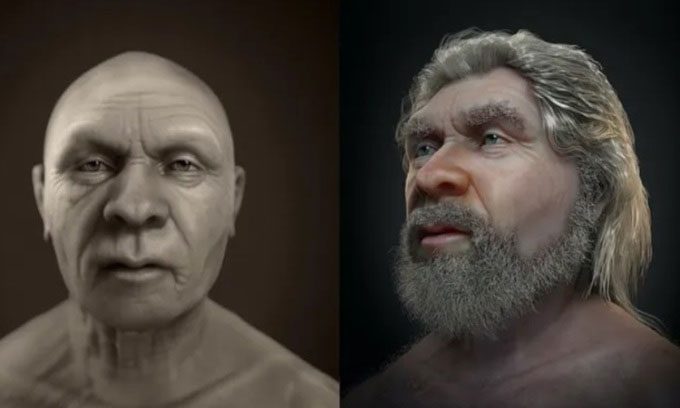A team of researchers has recreated the portrait of an ancient man who lived tens of thousands of years ago based on a skeleton found in a cave in France.
In 1908, a group of Christian monks discovered the remains of a man buried inside a cave in La Chapelle-aux-Saints, a region in south-central France. The skeleton was nearly complete, missing only a few teeth, and researchers nicknamed it “the old man.” However, scientific examinations revealed that the remains were not of a modern human (Homo sapiens) but belonged to a Neanderthal, an ancient human species that went extinct about 40,000 years ago.

The man in the cave in France exhibits many features characteristic of Neanderthals. (Photo: Cícero Moraes).
The skeleton displays several prominent characteristics of Neanderthals, including an oversized brow ridge, a flat skull base, and large eye sockets, according to eFossils.com from the Department of Anthropology at the University of Texas at Austin. Now, after 115 years, forensic artists have created a digital reconstruction of the face of the 40-year-old Neanderthal man, helping to visualize what he looked like between 47,000 and 56,000 years ago. The research team unveiled the reconstructed image at a workshop organized by the Italian Ministry of Culture in October, as reported by Live Science on November 7.
To estimate the facial features, the forensic artists used a computed tomography (CT) scan of the skull, then imported the measurement results along the Frankfort horizontal plane (the line running from the bottom of the eye socket to the top of the ear hole) based on skull data from a donor database. This provided the research team with the necessary framework to create the facial structure. Next, they used soft tissue thickness markers from living donors to build the skin and muscles of “the old man.” They enhanced the reconstructed image to make it look more lifelike by adding details like skin texture and hair.
“We created two images, one that is more objective with a brownish-red tone for the chest and another that is much more speculative, featuring a beard and hair,” said Cícero Moraes, a Brazilian graphic expert and co-author of the study. “The reconstructed image shows that Neanderthals are quite similar to humans, while also being different, exhibiting some peculiar features like a lack of chin.”
Although this is not the first time artists have attempted to reconstruct the faces of Neanderthals, previous inaccurate representations often depicted them as resembling primates, such as the 1909 painting by Czech artist František Kupka. The use of digital measurement results from CT scans has helped the research team enhance the accuracy of the reconstruction and provide new insights into the close relatives of modern humans.


















































